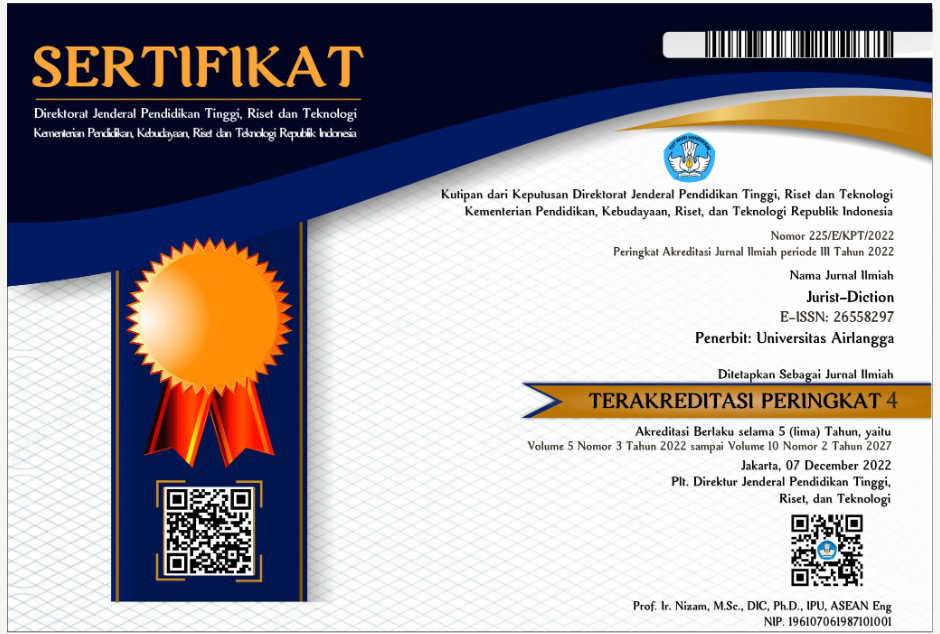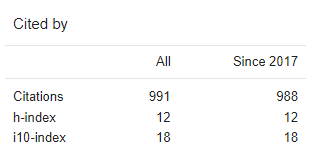Penggunaan Trotoar Bagi Penyandang Disabilitas Ditinjau dari Undang-Undang No. 22 Tahun 2009 Tentang Lalu Lintas dan Angkutan Jalan
Downloads
Buku
Sakti Adji Adisasmita, Transportasi Komperehensif dan Multi Moda (Graha Ilmu 2014).
Muhammad Farouk, Praktik Penegakan Hukum Bidang lalu Lintas (Balai Pustaka 1999).
Muladi, Hak Asasi Manusai : Hakekat, Konsep dan Implikasinya dalam Perspektif Hukum dan Masyarakat (Refika Aditama 2005).
Akhmad Soleh, Aksesibiltas Penyandang Disabilitas terhadap Perguruan Tinggi : Studi Kasus di Empat Perguruan Tinggi di Yogyakarta (LKiS, 2016).
Jurnal
Aprilina Prawesti, ‘Hak Penyandang Disabilitas Dalam Perspektif HAM Internasional dan HAM Nasional' (2017) 2 Jurnal Era Hukum.
Willy Putra, ‘Pelaksanaan Perlindungan Hukum Terhadap Persamaan Hak Bagi Kelompok Penyandang Disabilitas Dalam Angkutan Penerbangan', Jurnal Hukum Adigama, (2018) 1 Jurnal Hukum Adigama.
Rina Saraswati, 'Kenyamanan Pejalan Kaki Terhadap Pemanfaatan Trotoar Di Jalan Brigjen Katamso Medan' (2017) 3 Jurnal Education Building.
Laman
Badan Pusat dan Penelitian Kesejahteraan Sosial Pusat Data dan Informasi Kesejahteraan Sosial Jakarta, www.perpustakaan.bapppenas.go.id.
Biro Komunikasi dan Informasi Publik,'Transportasi sebagai pendukung sasaran pembangunan nasional' (2017) www.dephub.go.id.
Sandro Gatra, ‘Konvensi Hak Penyandang Disabilitas Diratifikasi' (2018) www.nasional.kompas.com. Penyandang Disabilitas Kesulitan Lewati Totoar, (2018) www.pressreader.com/
indonesia/jawa-pos/20180310.
Banyak trotoar berubah menjadi tempat berjualan, pejalan kaki kehilangan haknya, (2016) www.surabaya.tribunnews.com.
Jurist-Diction (P-ISSN 2721-8392, E-ISSN 2655-8297), published by Universitas Airlangga, is licensed under the Creative Commons Attribution 4.0 International License (CC BY 4.0).
This license permits users to:
- Share – copy and redistribute the material in any medium or format;
- Adapt – remix, transform, and build upon the material for any purpose, including commercial use.
These freedoms are granted under the following conditions:
Attribution – You must provide appropriate credit, include a link to the license, and indicate if any changes were made. This may be done in any reasonable manner, but not in a way that suggests the licensor endorses you or your use.
No additional restrictions – You may not apply legal terms or technological measures that restrict others from exercising the rights granted under the license.
Note: As of Volume 5, No. 1 (2022), Jurist-Diction has adopted the Creative Commons Attribution 4.0 International License (CC BY 4.0), replacing its previous license (CC BY-NC-SA).


















